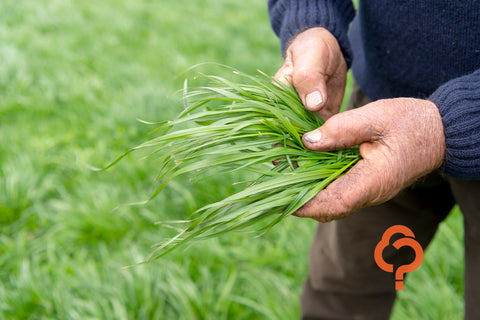Preparation pays off when it comes to nitrogen and your bottom line. You might think it's pricey to apply nitrogen to your dry stock farm this spring but thinking of fertiliser as an investment, rather than a cost, puts it in a different light. Here are a few tips to help you plan.
Farmers are paying closer attention to fertiliser expenses with farm inputs increasing and time becoming tighter. Yet, spring nitrogen can work wonders for pastures on sheep and beef farms. This early growth boost gives you more options in managing your farm and sets you up for success in the upcoming season.
To save on the bottom line, we reckon that it’s vital to do your homework now, so you can be proactive and prepared.
Why nitrogen?
While it's important to boost carcass weights, nitrogen application has many flow-on benefits.
Take sheep farming. Ewes tend to be in better condition, leading to fewer lamb deaths. We see better bonding between ewes and lambs because the ewe doesn't have to forage so far. At the same time, increased milk production leads to faster-growing lambs. And because the ewes are in better condition, their fertility rates improve the following year. These are all factors worth taking into account.
Apply at the right time
It takes time for nitrogen to respond, so forward planning is essential because we want to maximise pasture growth for lambing. So, if you're planning to apply nitrogen pre-lambing, give those paddocks one month to grow before sending the stock in.
That means early August is the best time to apply nitrogen in the upper North Island. Lambing dates in the south are slightly later, changing progressively the further south we go.
Applying nitrogen in spring could help prevent a feed deficit at the other end of the season. Compare applying nitrogen with other solutions — buying in silage, for example. How do the costs stack up?
Picking the right product
For the best bang for your buck in nitrogen fertilisers, Urea and N-Protect are our top picks. However, picking the perfect product for variations in soil, requires some careful consideration and planning.
For instance, if you're working with sedimentary and pumice soils, consider adding sulphur to the mix with Ammo 36 or Ammo 31 early on, to enhance the nitrogen response.
To get a more accurate recommendation, try FertSearch, our handy new online tool that’s built to help farmers work out which fertiliser is best for their land.
FertSearch is great when you already have some idea of what your soil needs. For example, you’ve just received your soil test results and you know you need certain amounts of nutrients for a paddock.
Keen to give FertSearch a go? Here’s how it works:
Firstly, provide the basics like your paddock size and nutrients per Ha, keeping in mind any N caps in your region. (If you don’t know how much you need, or you're unsure about certain nutrients, leave the dash; if you don't want a specific nutrient, put a zero). To get a sense of the total costs on the ground, not just in the truck, you can also estimate or adjust the cartage per tonne and/or spreading costs per hectare.
Click ‘Calculate Recommendations’ and FertSearch will provide three options that match your nutrient profile. We make sure nothing is too far off from each nutrient value you entered before we consider it a match.
The first gives you the Closest Match to the nutrients per Ha that you provided. We also scan the list to provide you the option with the Lowest Cost (just the cost of fertiliser).
But of course, finding a product and its cost is only part of the picture – you also need to consider transport/distribution and application amounts. That’s why we take your product matches and calculate a Lowest Tonnage option.
The lowest tonnage option may differ from the lowest cost option because some products have a slightly higher product price, but the tonnage needed is less, resulting in a lower applied cost at the end of the day. We show you both the fertiliser cost and the applied cost across all 3 options, so you can see the numbers for yourself.
Of course, there are always variables for you to consider, like the amount your truck/trailer can hold before needing to pay for another truck, but this gives you a rough guide to make your decision.
Nitrogen – a cost-effective solution
We understand that you don’t want to buy more nitrogen than you need or find nasty surprises in the final bill.
Applying fertiliser could be your best investment this year, but with rising costs it's more important than ever to base your fertiliser decisions on sound calculations and evidence.
By using tools like FertSearch or our handy quantity calculators on each product, you can feel confident you’ve ordered what your farm needs – no more, no less.


